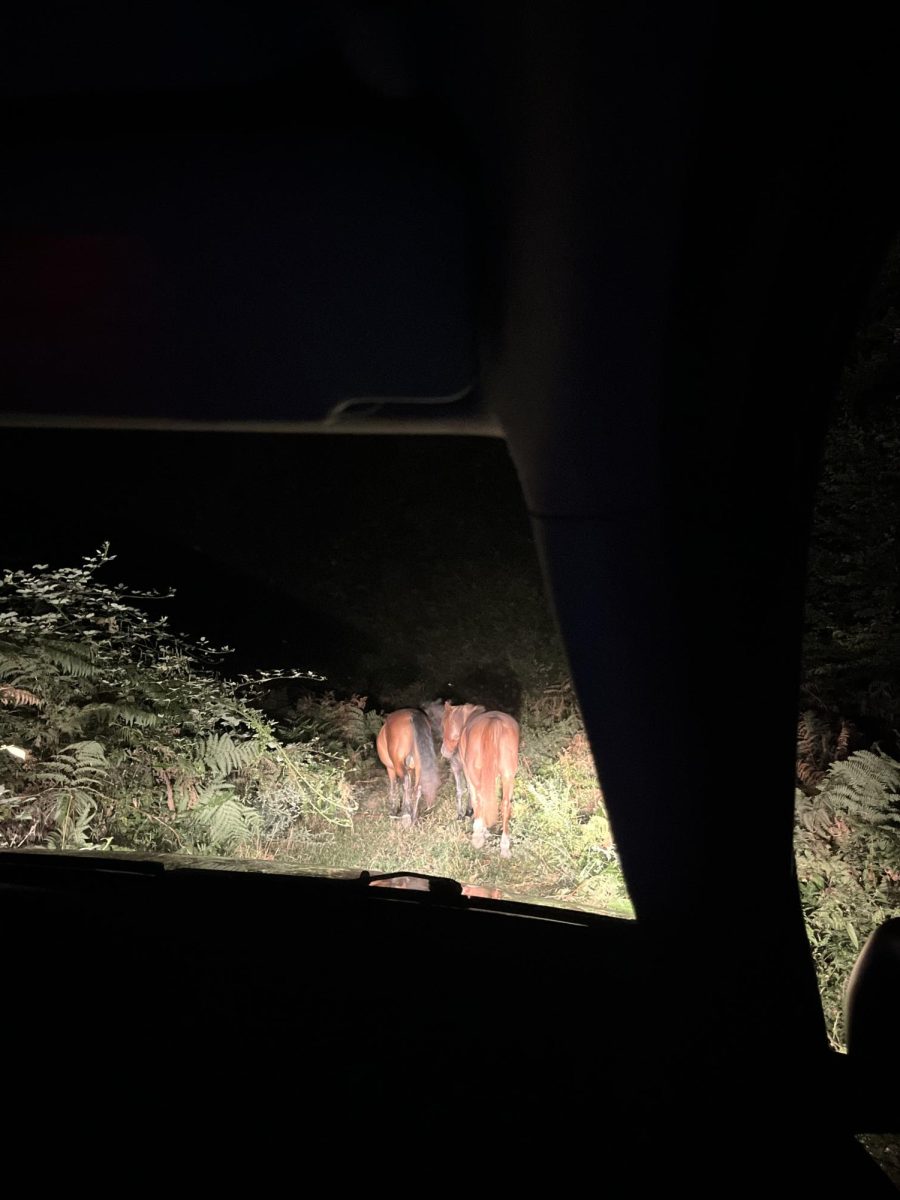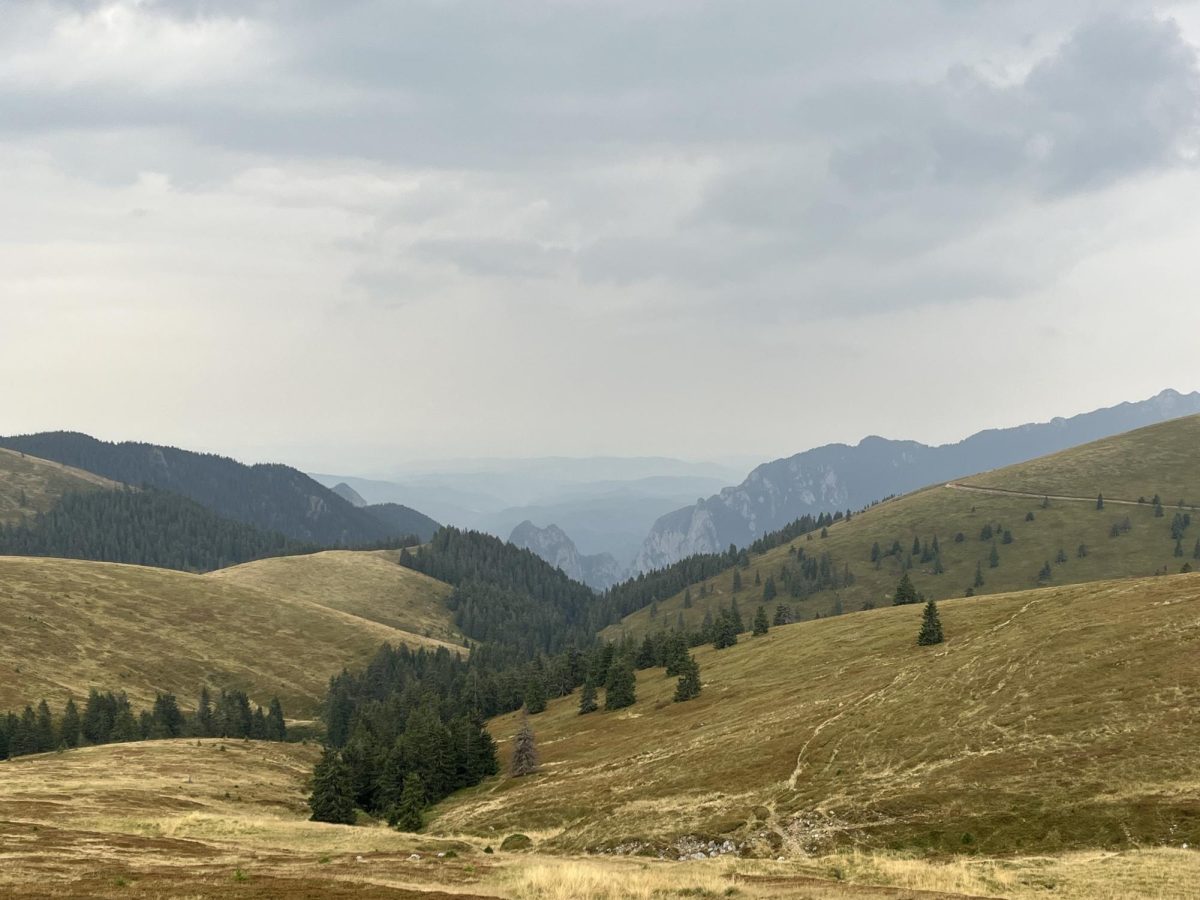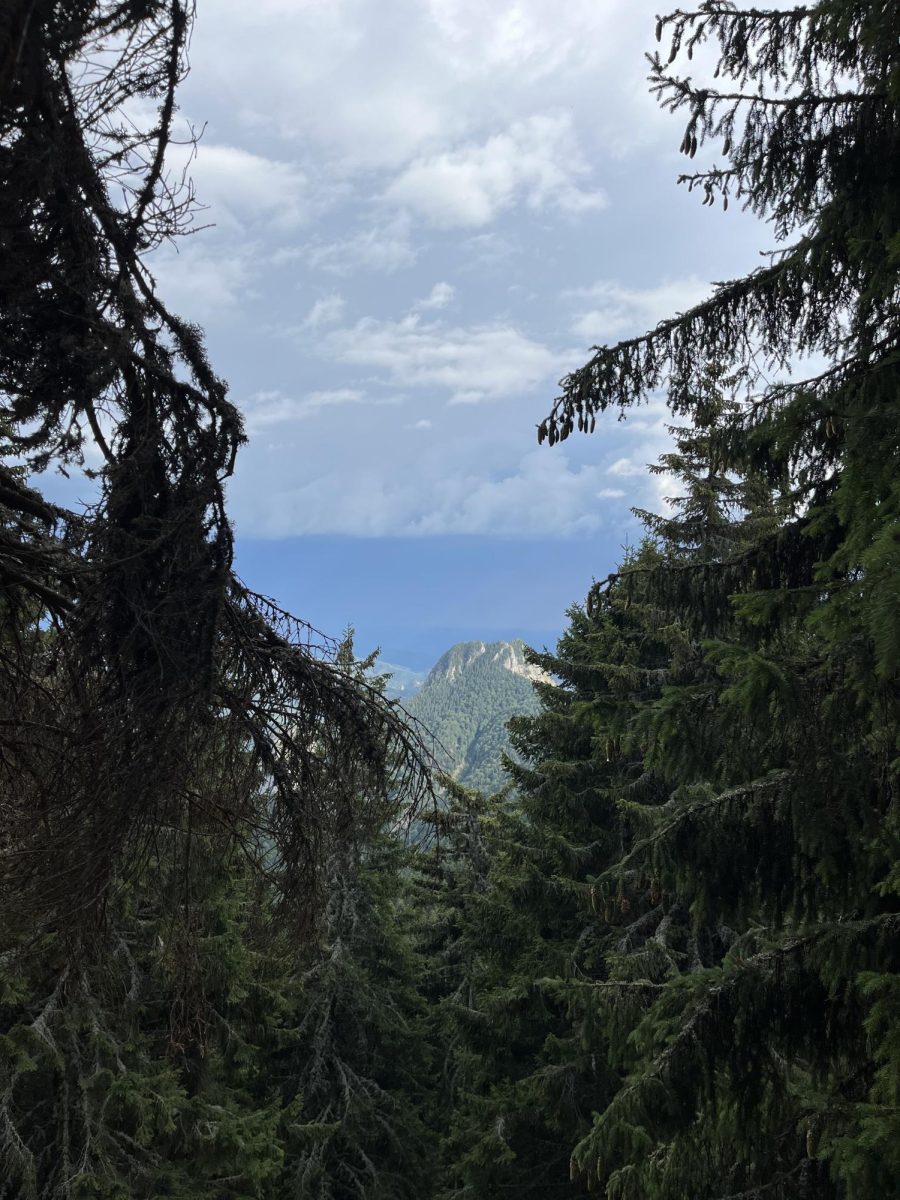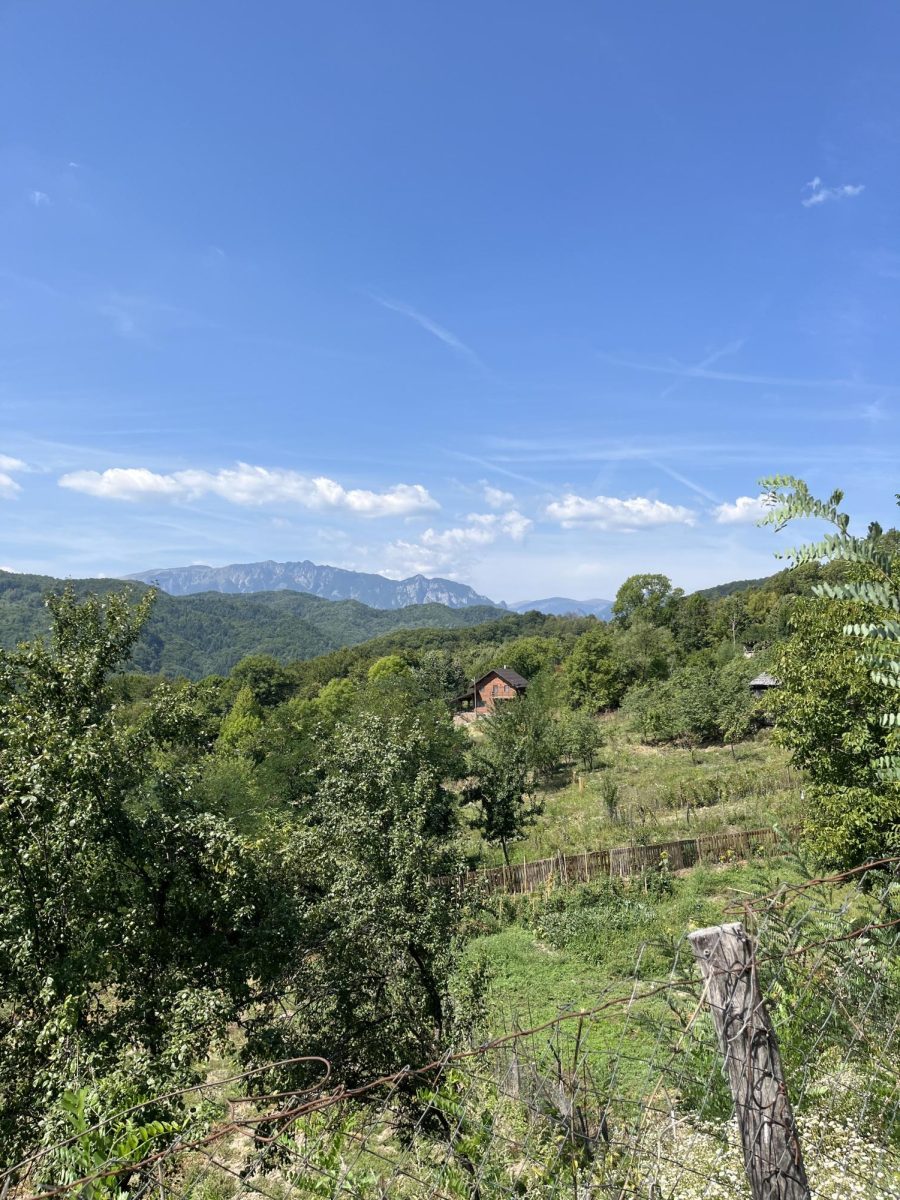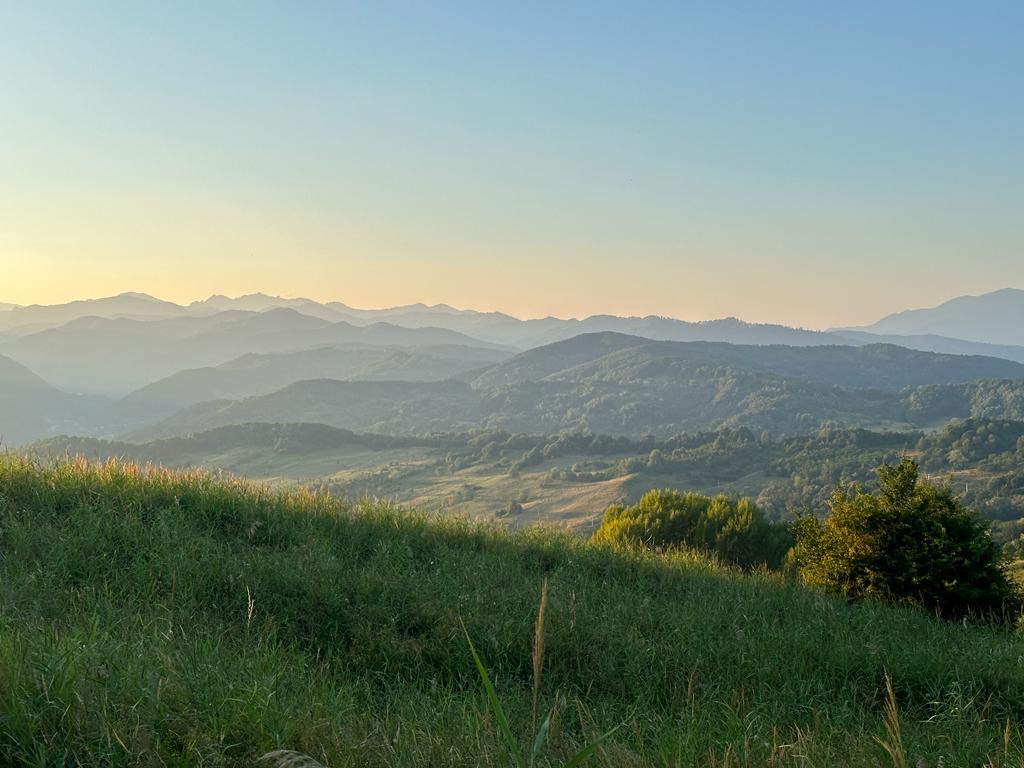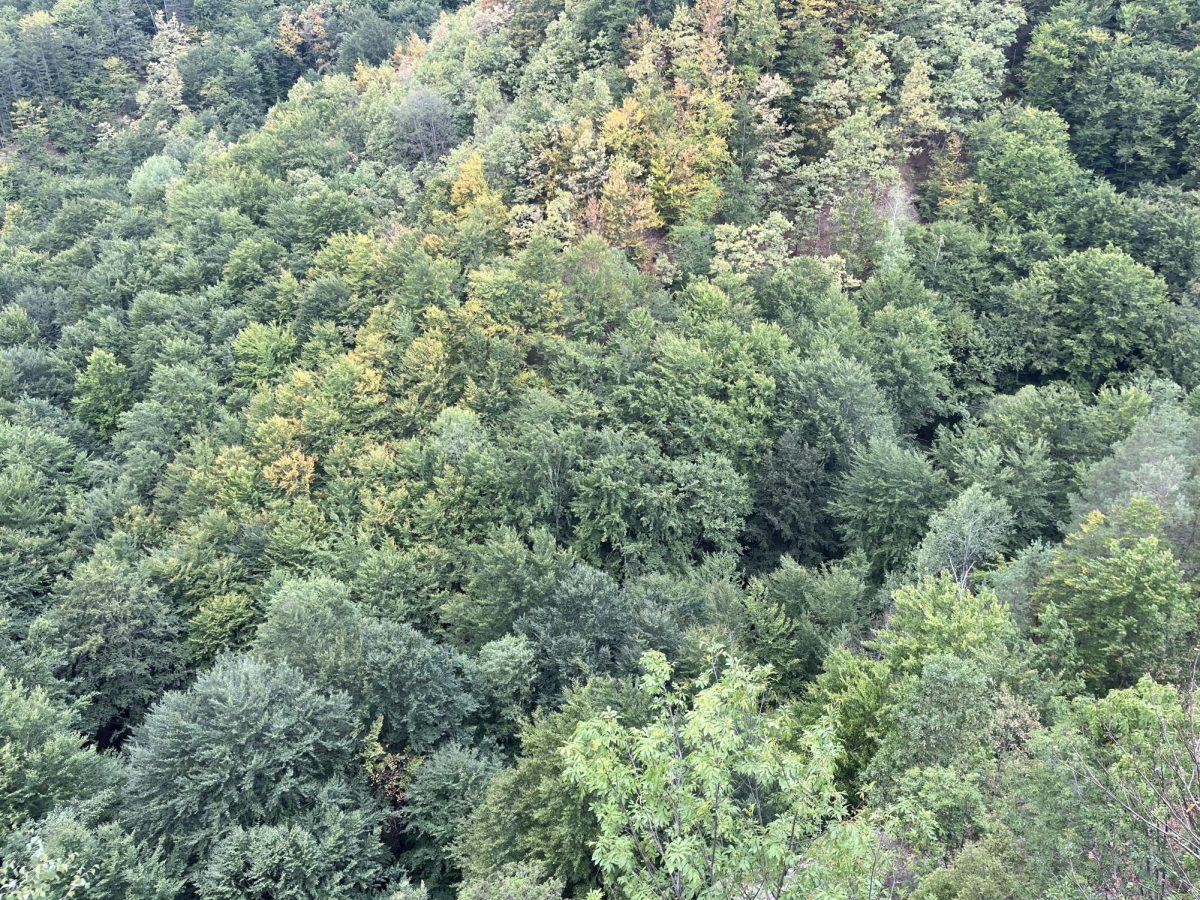Many people don’t know anything about Romania, nor are able to point to it on a map. I almost feel sorry for them, given that Romania is a hidden gem, especially when it comes to its extravagant nature. Though it doesn’t appear in mainstream media, Romania boasts one of the most rich and diverse ecosystems in Europe.
I’ve traveled to Romania every summer since I was born, and recently I’ve been spending time in Băile Olănești, a town nestled in a small depression in the south part of the Carpathian Mountains, the second largest mountain range in Europe and encompassing a third of Romania’s territory. In Băile Olănești, the forests are quiet and the mountains magnificent, and once in a while, you will see a family of deer, their eyes glowing in the dark. On my trip, I saw not only deer, but wild boars, wild roosters, wild horses, foxes, and bears. This is proof that Romania serves as a habitat for Europe’s largest population of brown bears, wolves, and lynxes; it is a spectacular exhibit of biodiversity.
Indeed, out of the 10 biogeographic regions recognized by the European Union (EU), Romania is home to 5 – alpine, continental, panonic, pontic, and steppe – making it the most geographically diverse country in Europe and the only country in Europe with pontic and steppe regions. The main reason why these semi-natural landscapes, such as mountain pastures and hay meadows, have remained so well preserved, is thanks to the traditional agricultural techniques, which are of great cultural and economic significance, that Romanians continue to use.
One of the most impressive landforms in Romania is the mountains. There are over 3,825 named peaks, 14 of which exceed 2500 meters. The largest mountain range by far is the Carpathian Mountains, which stretches over seven countries but is a particularly defining feature of Romanian geography specifically. It is shaped like a hook, and as you move away from the mountains towards the borders of Romania, the landscape transitions towards plateaus and hills until it becomes great plains and reaches the Danube Delta in the south and west.
Recognized as one of the most significant and richest nature refuges on the European continent, the Carpathians host 30% of European flora and are a habitat for Europe’s largest population of brown bears, wolves, lynxes, European bison, and rare bird species, including the globally threatened Imperial Eagle. The region is included in WWF’s “Global 200: Priority Ecoregions for Global Conservation” list, which features Earth’s most exceptionally biodiverse ecoregions that represent the respective ecosystems. But beyond its role as a spectacular product of nature, it is a bridge between Eastern European culture, a point of contact between humans, nature, and customs.
Unfortunately, its beauty has also been the cause of its pain. Abusive practices, including land abandonment, habitat conversion and fragmentation, deforestation, unsustainable forestry and agricultural practices, and pollution are resulting in the loss of Carpathian biodiversity. Socioeconomic developments and climate changes are the drivers of these changes.
This has led to disastrous consequences. Unsustainable logging and abusive exploitation practices have damaged thousands of hectares of forests. Loggers clear enormous areas of the Carpathian Mountains instead of selectively choosing bunches of trees from wide areas. As a result, the soil is left vulnerable to erosion.
Several organizations are working to address this issue. Among these is the World Wildlife Fund (WWF), which has been working with Romania since 2006. Its main areas of focus are the Carpathian Mountains and the Danube Delta, the largest remaining wetland and the second largest river delta in Europe, home to 5,000 species and 30 types of ecosystems.
WWF–Romania has had many successful endeavors over the last two decades. In 2014, WWF Romania partnered with Rewilding Europe to introduce the European bison, a species that disappeared from Romania over 200 years ago, back into the Southern Carpathians. Since then, more than 100 bison have been reintroduced into the Tarcului Mountains, and in the meantime, the population has grown to 170. This has made the region home to one of the largest free-roaming populations of the European bison in Europe.
European bison are an especially important species to preserve because they are a keystone species. Through their grazing and browsing habits, the bison help maintain biodiversity and microhabitats. They also, as new research proves, capture carbon from the atmosphere by locking it in compact soil, which helps mitigate the effects of climate change. A group of 170 bison can capture the same amount of carbon as the emissions of up to 84,000 average American petrol cars annually.
The list of accomplishments for WWF–Romania continues. In 2020, the organization established the Zero Plastic Patrol project in order to remove plastic waste from the Danube Delta. In 2021, they launched the Switch to Green Project, which educates and engages local communities in the conservation effort. Most Romanians already care for and appreciate nature, but many don’t understand how important it is to actively preserve this nature against abusive loggers and the general impacts of climate change. That’s why WWF Romania is important – it works to create a change and not just maintain the status quo. In 2022, WWF’s Romania Gârla Mare Project enabled the restoration of 600 hectares of wetland.
As previously mentioned, another important organization is Rewilding Europe. Besides working to repopulate the European bison species, Rewilding Europe aims to develop a nature-based economy in which the spectacular landscapes of Romania can attract tourists looking for dramatic scenery and unique wildlife experiences. Additionally, the organization educates Romanians, through education in schools and information panels in nature reserves, about the importance of conservation efforts such as the one concerning the European bison. The hope is that this awareness will encourage more people to advocate for the conservation effort, sparking a mindset shift that will enable meaningful, intentional, and long-lasting change.
But the most ambitious goal is for Romania to create a “Yellowstone for Europe,” a national park that can preserve and display the uniqueness of the Romanian landscape. This ambition is primarily pioneered by Foundation Conservation Carpathia (FCC). Their goals are divided into 5 categories: land conservation, ecological conservation, wildlife conservation, community outreach, and conservation enterprises.

Ultimately, FCC aims to create Europe’s largest forested national park, specifically a 500,000 acre (200,000 hectares) wilderness reserve dubbed “A Yellowstone for Europe.”
All hope is not lost, however. Romania still has over 6 million hectares of forest, of which a large portion is still virgin, meaning unfragmented areas untouched by humans. These forests are where some of the last remaining old-growth forests in Europe grow. But illegal logging has cleared vast swathes of forest and the concern is that it won’t stop.
FCC is modeling its efforts against the Tompkins project in South America by trying to create a vast park that is “large enough to support significant numbers of large carnivores and to allow evolutionary processes to happen.”
And just as important as the conservation efforts is involving communities in the cause. By providing jobs, the FCC is building an economy around this kind of work, further motivating people to participate. Additionally, the education Romanians receive will allow them to take the initiative in rewilding natural landscapes.
Hiking and exploring Romanian nature is one of the most impactful experiences of my life. Romanian nature has left enough of an impression on me because here I am, five months after my vacation, writing about the importance of preserving it. Perhaps that’s what part of the conservation effort is about – ensuring that everyone has the opportunity to mindfully visit Romanian nature and to gain experiences that will last a lifetime.
The most ambitious goal is for Romania to create a “Yellowstone for Europe,” a national park that can preserve and display the uniqueness of the Romanian landscape.


